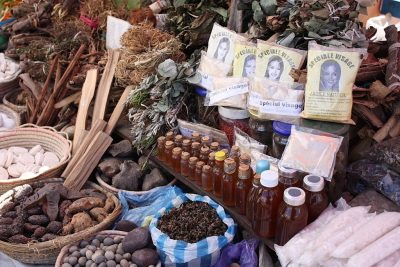Cultural Concepts of Distress
There has been a recent shift in medicine, psychology and anthropology and the way that we study and evaluate culturally specific forms of distress. Historically, the terms culture – bound syndrome, cultural – specific syndrome, or folk illness were used to categorize symptoms or disorders that we believed to be specific to certain societies or cultures. More recent research (Kaiser, & Weaver, 2019; Ventriglio, Ayonrinde, and Bhugra, 2016) question our perception of truly culturally specific conditions. Expressions and descriptions of disorders once thought to be culturally unique often overlap with symptoms that are seen and described in other cultures; these clusters of symptoms are just called something else.
Changes to society over the last decade, including technological advancements and increased globalization, has expanded cross-cultural influences and reduced cultural isolation. This means that descriptions of symptoms and expressions of distress that once seemed confined to specific locations in the world are being transmitted through social media and other influences. For example, anorexia nervosa was once thought to be a condition unique to Western cultures but recent psychiatric and psychologial research has identified symptoms of the disorder in other cultures and societies (Kaiser & Weaver, 2019).

Recent changes to DSM-5TR and the ICD-11 suggest a trend toward better understanding cultural influences rather than culturally specific disorders. Rather than disorders being confined to specific cultures, the emphasis has changed to better recognition of the expression of symptoms and sources of distress within each culture in order to improve healthcare and treatment. To capture the changes in thinking and understanding, the DSM – 5TR includes a section on Cultural Concepts of Distress, which are the ways that different cultural groups experience, understand, and communicate suffering, behavioral issues, or troubling thoughts and emotions. Cultural concepts of distress include a combination of psychiatric (brain) and somatic (body) symptoms that are considered to be a recognizable disease only within a specific society or culture. There are 3 concepts linked to CCD to help clinicians assess and to formulate a diagnosis:
- Cultural syndrome refers to clusters of symptoms of distress that occur and are understood within specific cultural groups, communities or contexts.
- Cultural idiom of distress acknowledges that expressions of suffering may not be syndromes. An idiom of distress in a way of talking about symptoms or experiences among people with similar backgrounds. These words or expressions do not need to be part of a syndrome. For example, consider the phrase, “I feel blue.” In the United States we would understand that to mean that someone feels sad or depressed but the meaning of the phrase would not translate or be understood in the same way in other countries or cultures.
- Cultural explanation or perceived cause of the disorder. This means that symptoms or suffering are directly attributed to linked to specific causal factors rooted in local beliefs or values. This could include explanations like spirits or failure to follow specific cultural practices. For example, in some cultures being the target of envy or jealousy (mal de ojo) can result in headaches, fever, crying or anxiety.
The three concepts replaced the phrase culture – bound syndrome in the revised version of the DSM.
Some cultural syndromes involve somatic symptoms (pain or disturbed function of a body part), while others are purely behavioral. Some cultural syndromes appear with similar features in several cultures, but with locally specific traits. In general, cultural syndromes meet the diagnostic criterais for several disorders in the DSM but do not correspond directly with any one disorder – this is part of why they are considered a cultural syndrome. The DSM – 5TR includes 10 examples of cultural syndromes that are currently identified in the global community including Dhat, Hikikomori, and Susto.
- Dhat syndrome is a condition found in the cultures of the Indian subcontinent in which male patients report that they suffer from premature ejaculation or impotence, and believe that they are passing semen in their urine.
- Hikikomori is cultural syndrome found in Japan that is characterized by severe isoloation including physical isolation in a person’s home. It is also characterized by extreme psychological detachment from society, and avoiding tasks that require interaction with others. This condition is recognized as a psychological disorder in the Japanese classification system (their equivalent of the DSM).
- Susto is a cultural illness primarily among Latin American cultures. It is described as a condition of being frightened and “chronic somatic suffering stemming from emotional trauma or from witnessing traumatic experiences lived by others.
Within the ICD-10 (Chapter V) framework cultural syndromes are characterized by:
- Categorization as a disease in the culture.
- Widespread familiarity in the culture.
- Complete lack of familiarity or misunderstanding of the condition to people in other cultures.
- No objectively demonstrable biochemical or tissue abnormalities.
- The condition is usually recognized and treated by the folk medicine of the culture.

